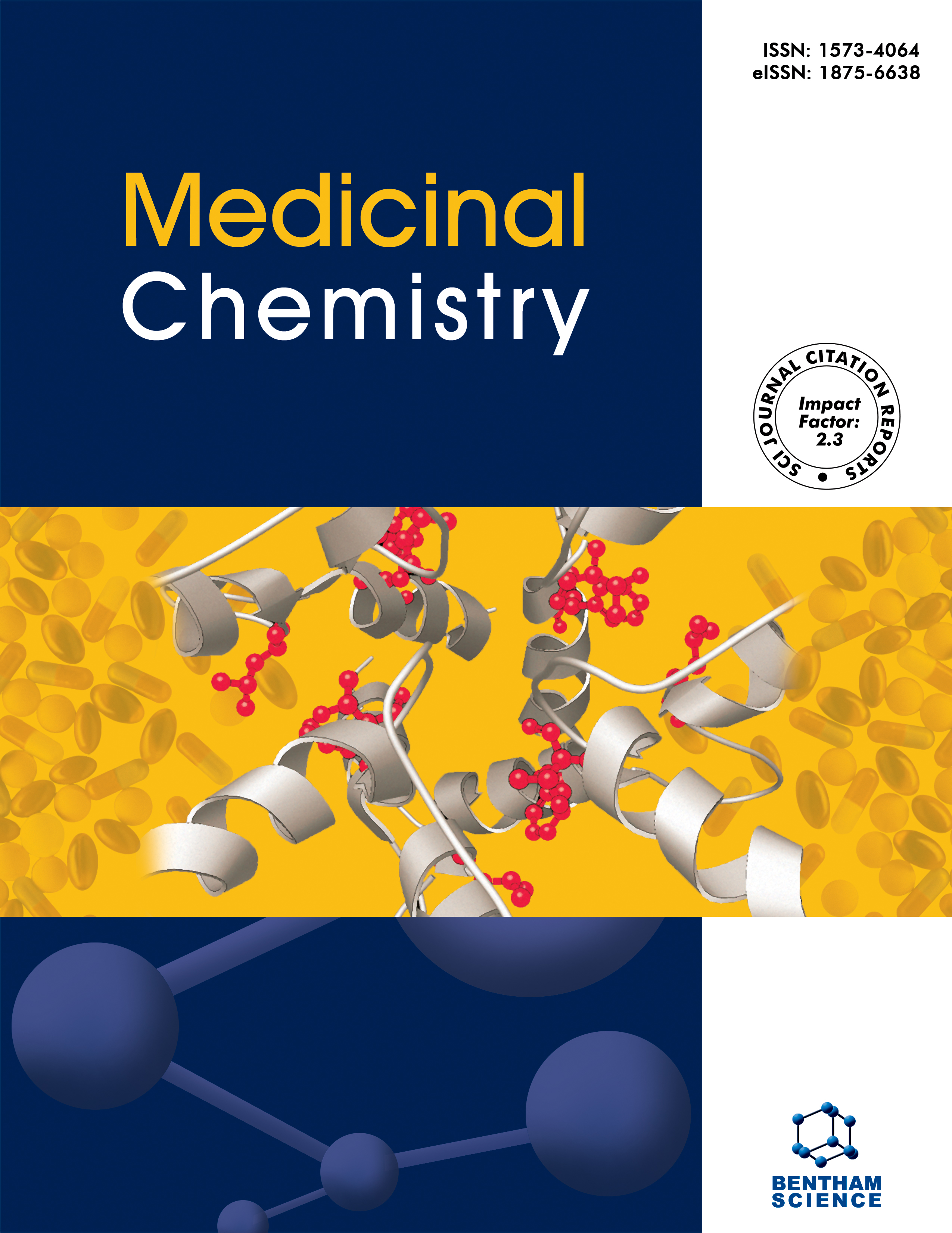- Home
- A-Z Publications
- Medicinal Chemistry
- Previous Issues
- Volume 21, Issue 1, 2025
Medicinal Chemistry - Volume 21, Issue 1, 2025
Volume 21, Issue 1, 2025
-
-
Platinum Group Metals against Parasites: State of the Art and Future Perspectives
More LessBackgroundGlobally, parasitic diseases are considered among the neglected diseases. Clinically, several drugs are used in treatment, however due to drug resistance and multidrug resistance and the low investment in new research lines, there has been a failure in the treatment of parasitic illnesses.ObjectivesThe present mini-review is a comprehensive review of the use of platinum group metals as biological agents. It aims Read More
-
-
-
Exploring Thiophene Derivatives: Synthesis Strategies and Biological Significance
More LessObjectivesThiophene is one of the most important heterocyclic scaffolds with notable pharmacological properties. Thiophene and its derivatives are of particular interest among sulphur-containing heterocycles because of their similarities to numerous natural and synthetic compounds with identified potential. The purpose of this study is to extensively analyse the synthetic pathways adopted for synthesising thiophene deriva Read More
-
-
-
In vitro and In vivo Activity of a New N-Oxide Derivative for Acne Vulgaris Treatment
More LessAuthors: Ivone Leila Lima Delgado, Cauê Benito Scarim, Felipe Hugo Alencar Fernandes, Karina Pereira Barbieri, Marisa Campos Polesi, Aline Renata Pavan, Diego Eidy Chiba, Hérida Regina Nunes Salgado, Iracilda Zeppone Carlos, Marcos Antonio Corrêa, Cleverton Roberto de Andrade and Jean Leandro dos SantosIntroductionFuroxan and benzofuroxan are compounds containing an N-oxide function, known for their diverse pharmacological properties, including antimicrobial and anti-inflammatory effects. This study aimed to investigate these activities using an in-house library of N-oxide compounds.MethodsTwenty compounds were tested against both Gram-positive and Gram-negative bacteria, including Cutibacterium a Read More
-
-
-
A Computational Approach Using α-Carbonic Anhydrase to Find Anti-Trypanosoma cruzi Agents
More LessBackgroundChagas disease has an ineffective drug treatment despite efforts made over the last four decades. The carbonic anhydrase of Trypanosoma cruzi (α-TcCA) has emerged as an interesting target for the design of new antiparasitic compounds due to its crucial role in parasite processes.ObjectiveThe aim in this study was identify potential α-TcCA inhibitors with trypanocidal activity.MethodsA maximum common Read More
-
-
-
Synthesis and Evaluation of Antibacterial and Antifungal Activities In vitro and In silico of Novel Morpholinoalkoxychalcones
More LessIntroductionChalcone compounds exhibit diverse bioactivities, attracting significant interest. Morpholine is a heterocycle commonly used in medicinal chemistry. It could enhance the potency, pharmacokinetics, and bioactivities of its compounds.MethodsAdding morpholine into the chalcone scaffold could help create new compounds with favorable bioactivities. In this study, a new parallel synthesis procedure has be Read More
-
-
-
Docking and Molecular Dynamics Studies on Anticancer Activities of Flavonoids as Inhibitors of CDK2 and CDK9
More LessAuthors: A.S. Sony and M. Xavier SureshBackgroundFlavonoids express a wide range of medicinal properties, our study presented results on the anticancer activity of selected compounds using in silico studies.ObjectiveIn this article, in silico studies were carried out to find promising anticancer lead among selected flavonoid compounds.MethodsHere, we carried out molecular docking and MD simulation for anticancer screening of flavonoid derivatives against Read More
-
Volumes & issues
-
Volume 21 (2025)
-
Volume 20 (2024)
-
Volume 19 (2023)
-
Volume 18 (2022)
-
Volume 17 (2021)
-
Volume 16 (2020)
-
Volume 15 (2019)
-
Volume 14 (2018)
-
Volume 13 (2017)
-
Volume 12 (2016)
-
Volume 11 (2015)
-
Volume 10 (2014)
-
Volume 9 (2013)
-
Volume 8 (2012)
-
Volume 7 (2011)
-
Volume 6 (2010)
-
Volume 5 (2009)
-
Volume 4 (2008)
-
Volume 3 (2007)
-
Volume 2 (2006)
-
Volume 1 (2005)
Most Read This Month
Article
content/journals/mc
Journal
10
5
false
en


